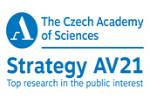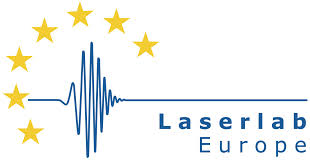Research topics
Thermal plasma pyrolysis and gasification
Treatment of wastes and the reduction of pollution created by human activities using thermal plasma technology.
Pyrolysis and vitrification of solid substances in thermal plasma - production of syngas (H2, CO) from organic wastes. System PLASGAS for the destruction of solid and liquid materials based on the hybrid water/argon plasma torch WSP®H 2000.
High enthalpy steam plasma, generated in hybrid water/argon plasma torch, is used in the research of gasification of various types of organic materials like waste biomass, wooden pellets, polyethylene, polypropylene, waste plastics, low-quality coal, pyrolytic oil from thermal treatment of waste tires and refuse-derived fuel. The plasma gasification reactor PlasGas with hybrid plasma torch is one of the largest experimental reactors in the world with complete process diagnostics and detailed reaction products analysis. Plasma aided reactions of solid, liquid and gaseous substances with water, carbon dioxide and oxygen are studied. The experiments verified the possibility of production of high-quality syngas with a high content of hydrogen by treatment of different materials in steam plasma. For all materials, the produced syngas is characterized by high purity and very high content of hydrogen and carbon monoxide, which is substantially higher than hydrogen and CO content, obtained by conventional non-plasma as well as plasma processes. High quality of the produced gas is given by extreme parameters of the used plasma – composition of steam plasma, very high temperature and extremely low plasma mass flow rate in connection with high enthalpy. Measured compositions of the produced syngas are close to ideal theoretical composition calculated as thermodynamic equilibrium composition of a mixture of all input components. Measurements also reveal very low concentrations of tar which is substantially lower than tar content in the gas produced by other gasification processes. The composition of syngas can be easily controlled by the addition of reaction admixtures like CO2, water, or oxygen. The process can also be used as energy storage. Electrical energy is transferred in the torch to plasma enthalpy which is then transformed to syngas chemical energy which can be stored.
Destruction of dangerous waste
The topic of destruction and gasification/pyrolysis of various types of dangerous waste is of high importance and commercial interest. The examples of dangerous wastes are medical and hospital waste or low level radioactive waste. We contribute to this field by finding the solutions for the treatment of such waste by applying thermal plasmas. In our reactors, we perform tests using simulated dangerous waste. Cooperation with industrial partners should lead to the construction of the pilot plant for the treatment of real dangerous waste.
Reforming and pyrolysis of hydrocarbons
Hydrocarbons reforming and pyrolysis accompanied by the formation of syngas, gaseous hydrogen and solid carbon is principally simple and effective method of energy utilization of hydrocarbons without direct CO2 emissions. Gaseous hydrogen is worldwide in its majority produced from methane or natural gas. However, there is still high demand to perform this process more effectively from the point of view of energy balance as well as from the point of view of the quality of the products and CO2 emissions. One of the non-conventional approaches to the hydrocarbons reforming and pyrolysis lies in the supply of the energy needed for the process by the means of thermal plasma. We study and explore this approach in the cooperation with industrial partners.
Carbon dioxide utilization
The treatment of CO2 is one of the critical challenges of our society. Technologies based on thermal plasmas have high potential to bring new solutions. Our contribution is in the utilization of the captured CO2 (from combustion flue gas) for the production of syngas from waste plastics which is in agreement with the philosophy of CCU (carbon dioxide capture and utilization). The main benefit is the incorporation of technology with which we have many years of experience (i.e. high-temperature plasma gasification) into the CCU concept and real verification of the possibility of using plasma gasification in the functional unit. We expand our know-how to use currently available waste plastics as an input matrix for the reaction with CO2 to produce syngas. We also evaluate the possibilities of further use of the produced syngas, in particular for the production of alternative fuels of the SNG type, or Fischer-Tropsch fuels. Due to the possibility of increasing the H2/CO ratio in synthesis gas, we also explore the possibility of partial plasma pyrolysis, when part of the input carbon from plastics comes out of the process in the form of soot, which has a great potential for commercial use.
Decomposition of perfluorinated compounds
Fluorinated compounds, widely used substances in semiconductor manufacturing, represent a potent source of global warming effect with direct global warming potential much higher than that of carbon dioxide, methane or nitrous oxide. These gases are exceptionally chemically stable, and thus very high temperature as generated by thermal plasma torch is adequate for their destruction. Compared to conventional methods, thermal plasma offers higher efficiency of decomposition as it enables reaching sufficiently high temperature and enthalpy. Up to now, we carried out a number of experiments dealing with the decomposition of perfluorinated compounds (PFC) and fluorinated ozone-depleting substances. For this purpose we recently constructed new unique plasma reactor.
Theoretical Description and Numerical Modeling of Arc Plasmas and Chemical Reactors
Theoretical description of processes in the electric arcs with water vortex and hybrid stabilizations under atmospheric pressure is investigated for several years. Two-dimensional numerical model of these arc discharges assumes that plasma flow is laminar, compressible, in the state of local thermodynamic equilibrium and in axisymmetric geometry configuration. Energy transport from the discharge by radiation is included either by the net emission coefficients or by the partial characteristics method for water or mixture of water-argon plasmas. Two numerical methods are applied for the solution of the set of the conservative equations (continuity, momentum, energy): 1) a compressible-modified finite-volume-based difference scheme with iteration procedure SIMPLER. 2) LU-SGS method with MUSCL-type TVD scheme for diffusion-convection terms. Large eddy simulation (Smagorinsky subgrid-scale model) is applied to capture possible turbulent behavior.
Modeling of the thermal plasma reactor PLASGAS for gasification and vitrification of waste and biomass based on the hybrid water-argon plasma torch WSP®H 2000. Two-dimensional modeling of mixing of steam plasma jet with steam atmosphere has been studied so far. Standard, RNG and realizable k-e turbulence models in the FLUENT code are used in the simulations. Steam plasma transport and thermodynamic properties are generated in the ADEP code.












